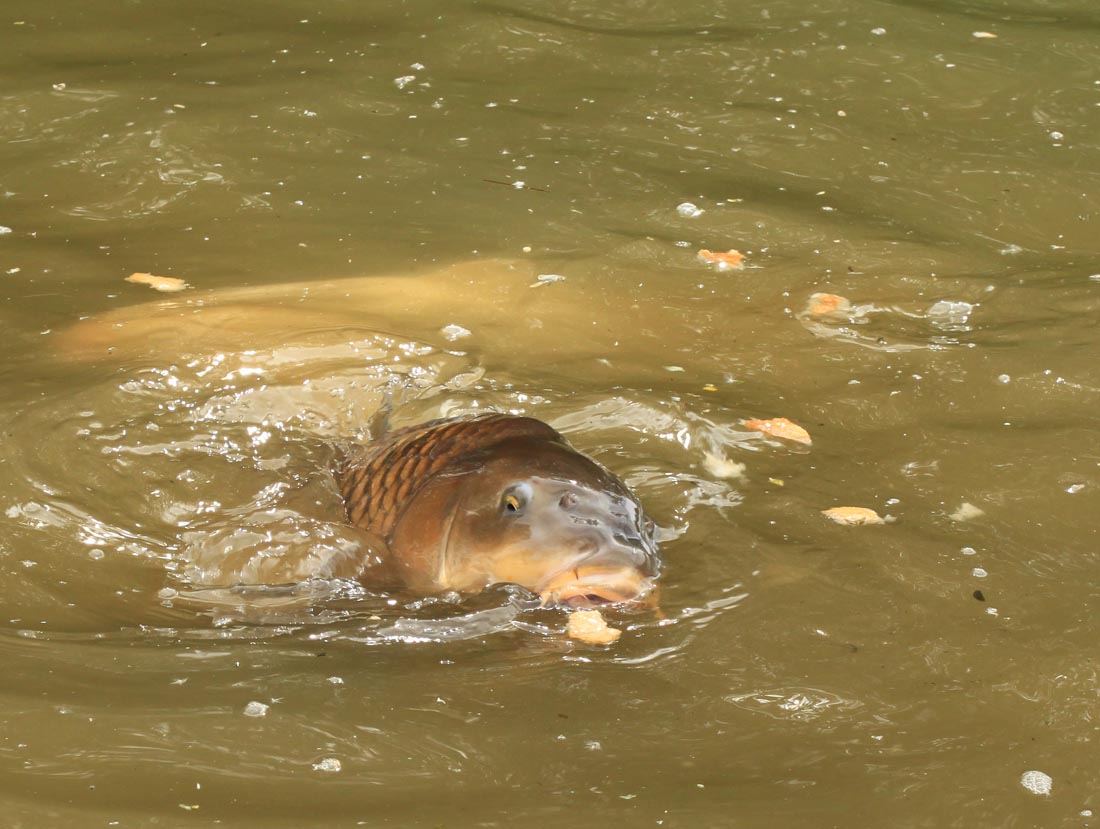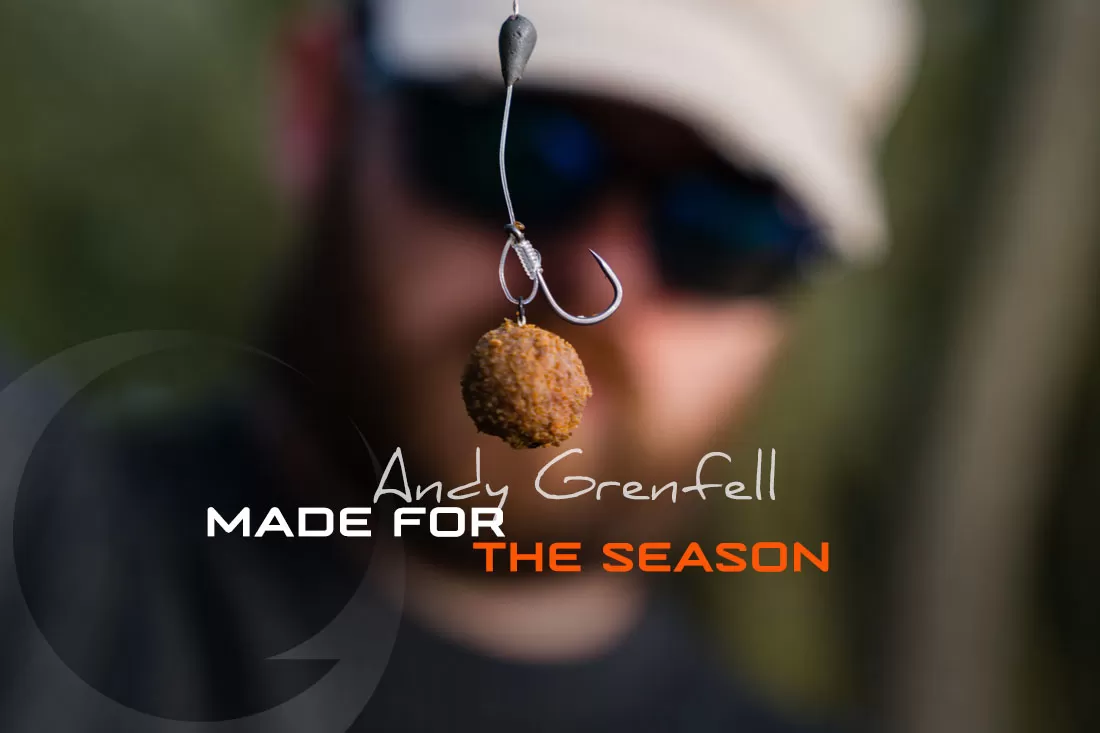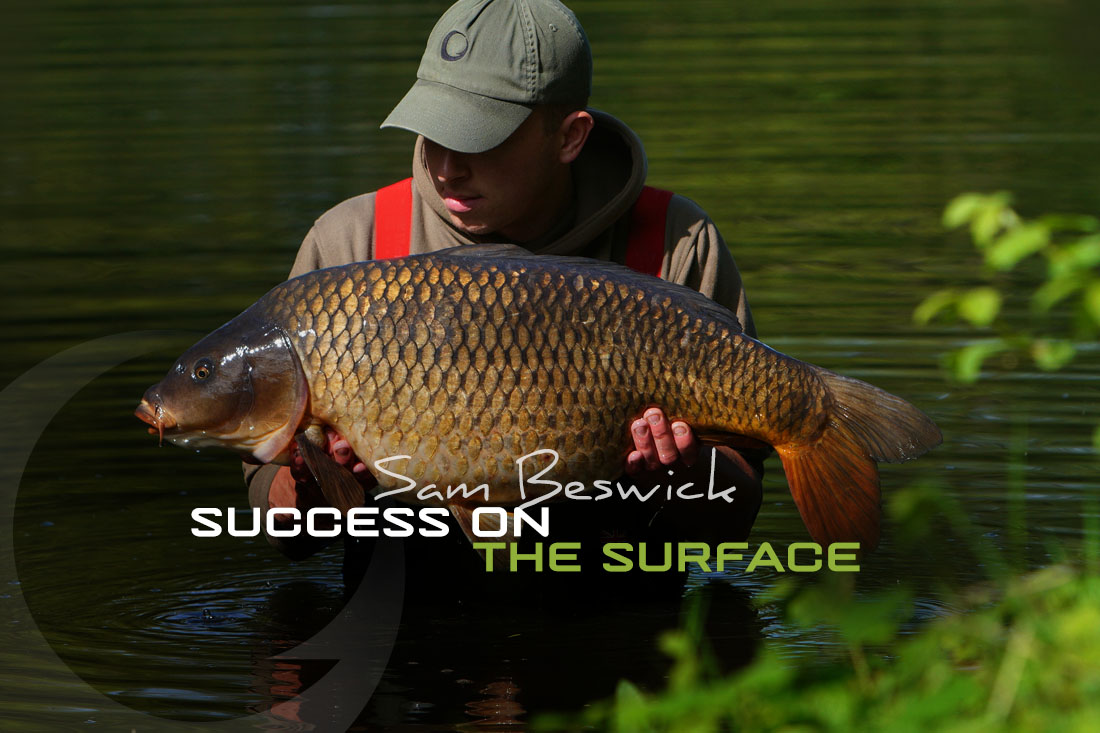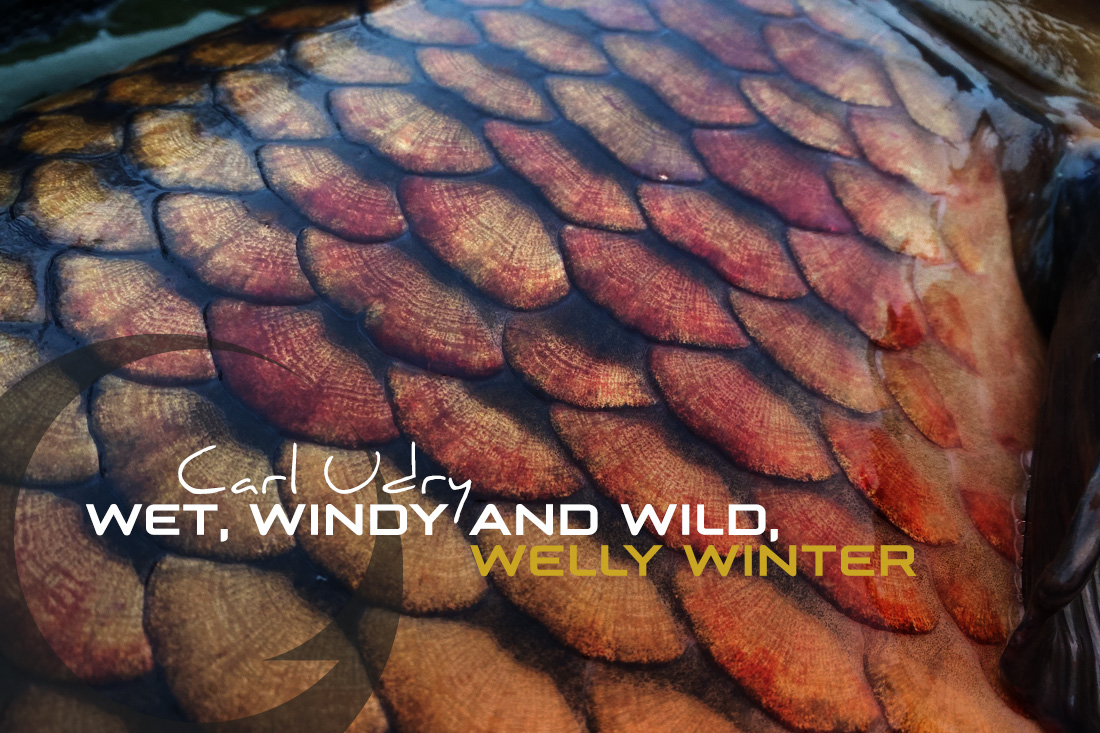Surface fishing for carp, on its day it can be the most productive, frustrating, rewarding and exciting form of fishing we can do. Whether targeting a big shoal of fish that have been whipped into a feeding frenzy by careful and constant baiting or identifying a lone fish of specimen size, surface fishing is a fantastic way of spending a few hours fishing, provided you get your approach right. It’s a very simple way of fishing but as with most simple methods, get the basics wrong and you could’ve missed your chance before a bait is even in the water.
Baiting Strategy
It’s vitally important when surface fishing to gain the carps confidence before introducing a hookbait. It’s very easy and understandable to be keen to get a baited rig in amongst the fish but a misplaced cast or introducing a rig too early can see the fish spook and not return. The beauty of this style of fishing is you can take minimal tackle and there’s no feature finding or swim location to do, it’s simply a case of finding where the fish are and being patient. Once you’ve located a shoal of carp it’s time to put a baiting plan into action. With so many options available for loose feed what’s the best plan of attack? Using free offerings of different sizes is a great tactic as it can keep the fish guessing and prevents them from getting preoccupied on a single type of bait. If feeding just small floating pellets or chum mixers the carp can easily get ‘zoned in’ on one size and disregard anything else, including the hookbait. Provided the fish are relatively close in a catapult is the ideal tool for introducing the loose feed if they are slightly out of range catapulting bait in upwind and letting it drift over the fishes head can be a great tactic. Alternatively using a small spod or spomb can see you introduce bait at range but it’s important not to land directly on top of the fish as this is bound to spook them away from the area, again casting slightly upwind of the fish and allowing the free offerings to drift over their heads naturally is the best option. Once you’ve started baiting a little and often strategy is the best one to adopt, put too much in at once and the fish can move off, not enough and they’ll mop up the free offerings and drift away to feed elsewhere. A mixture of small pellets and 2 or 3 mixers similar in size to the eventual hookbait introduced a little at a time will slowly see the fish become more and more confident, the key thing you’re looking for is fish eventually competing for food, once this is occurring it’s time to get a rig in the water.
Rigs
A surface controller, swivel, 10lb low diameter mono hooklength such a Gardner Zig Link and a hook is all you need for the business end of surface fishing. Starting at the reel a 4000 or 5000 size loaded with 10lb line is ideal, coupled with a 2lb test curve barbel rod you’ll have a well-balanced outfit that is capable of landing the biggest of carp. My choice of controller is the Gardner Flatliner in its smallest size, small, streamlined and ideal for fishing at ranges up to 50 or 60 yards these are tangle free and cast like a bullet. I choose fish my Flatliner inline and locked in place by 2 Large target Rig Stops and then tie on a large ring swivel using a palomar knot. I prefer to attach my hooklength to the swivel using the loop to loop method after tying a large overhand loop knot in the hooklength to be used. This gives the rig 2 added advantages, the large loop helps kick the bait away from the controller on the cast and if you need to change the hooklength due to the feeding situation its quick & easy to do without tying knots and messing about with cutting off the existing hooklength.
The Fishing
With some hot weather forecast and having a day off work at just the right time I was keen to get on the bank to make the most of the favourable conditions. My first choice venue had closed due to spawning fish which as it happens was a blessing in disguise. Having a quick re-think, a venue I’ve frequented on and off for the best part of 19 years, Bishops Bowl Lakes was chosen for my session.
Arriving shortly after the venue gates opened at 7am I had a quick catch up with the fishery manager before heading off to one of the complexes lakes known as Mitre Lake. With depths down to 34 feet I was confident the carp would be in the upper water layers searching out the warmth from the early morning sun. Having a look around I soon found a solitary carp sat just under the surface beyond some marginal reeds. Carefully positioning myself slightly upwind I catapulted a few floating pellets in and waited to see if the carp would respond. The reaction was almost instant as the carp rose in the water column and sipped in a couple of tiny pellets. I gently introduced a few more freebies and out of nowhere a handful of double figure fish appeared as if by magic and were instantly stimulated by the feed I was introducing. It would have been very easy to introduce a hookbait and in all likelihood catch a carp quickly but this would have spooked the rest of the fish and ruined my chances of a multiple catch. Instead I chose to stay hidden behind the reeds and up the feed gradually until I had the fish competing for the food. It took a little over an hour of constant bating but eventually I had around 25 carp feeding aggressively, now was the time to introduce a baited rig.
There are a whole host of choices when it comes to hookbaits, from chum mixers, to pop ups, bespoke oily hookable floater pellets or imitation plastic offerings. They all have a place in the surface anglers armoury, my personal favourite is a trimmed down CC Moore Hookable Floater to replicate a chum mixer. Casting my rig well beyond the feeding carp I slowly and carefully drew it back towards them until the hookbait was sat in amongst the freebies. The cast had barely had time to settle before a big pair of rubbery lips broke through the surface film and engulfed the critical floater, a firm strike met with resistance and it was fish on at the first time of asking. After a short but spirited fight a lovely looking mirror carp was sat in the bottom of my net. Leaving the fish to rest I quickly put out a good helping of 6mm and 11mm floating pellets to regain the fish’s confidence, within seconds they were hoovering them up with reckless abandon. Unhooking the mirror I gently slipped it back and knowing a second fish was there for the taking, I cast straight back out. As if in slow motion the controller float hit the surface followed a split second later by the bait and in less than 2 seconds another pair of lips engulfed the hookbait and it was fish on and boy did I know about it! This particular fish pushed my tackle to the limit in the tight swim I was in and it was a good 10 minutes before she was ready for netting. A stunning looking mirror carp lay in the folds of the net and at around 17lbs I was over the moon to have caught a couple of lovely fish. I felt there may be a chance of one more fish from the swim but the commotion of the second capture had pushed the carp out into open water out of catapulting range, this is where a nice little edge for surface fishing comes in handy, making pellets balls from dampened down floater pellets. Dampening down some floating pellets I was able to mould them into compactable balls and catapult them the necessary distance to the feeding fish. One of the most important things to remember about introducing quantities of small pellet in this manner is to add 2 or 3 chum mixers to each ball so the carp are still picking out the odd larger food item and don’t become pre occupied on the smaller food samples.
With the fish at range I catapulted half a dozen balls of pellets and chum mixers and the carp were instantly on them, this time though getting them to take a hookbait was proving to be difficult. Try as I might they just wouldn’t take anything that wasn’t moving perfectly freely, they had become very wary after two of their companions had been caught. I kept the feed going in and it was obvious they were happy to feed with confidence. All I had to do was try to work out how to nab one more before heading home. The only thing left for me to do was shorten the hooklength and see if that would do the trick. Just 10 minutes later and after having changed the hooklength to just 12 inches long my plan came to fruition and a lovely low double fully scaled mirror was in the net. The hookbait had been out a while, but as soon as the carp sucked it in in the short hooklength did its job and the bolt effect of the inline Flatliner worked to perfection. I fished on for the rest of the day but it wasn’t until late in the afternoon that I started to get more action and in the last hour alone I landed another 5 double figure carp, which was great fun on a barbel rod and light gear.
Summary
There you have it, my simple but effective approach to surface fishing. During a day on the bank but only about 3 hours actual fishing time, I managed 8 doubles and at one point had in excess of 60 carp feeding in front of me.
My Top 5 Surface Fishing Tips
• Be patient, keep the feed going in on a little and often basis and the fish will feed and gain confidence.
• Time it right, early morning and evening are the best times of the day.
• Vary the feed you are putting in to prevent the carp becoming pre-occupied on one type of food source.
• Don’t introduce a rig until the carp are confidently feeding and competing with one another for food.
• Don’t be afraid to change the hookbait or length of the rig to get bites with wary fish.













Leave A Comment
You must be logged in to post a comment.